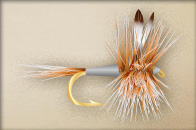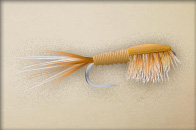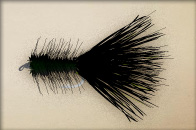Fly Tying Basics
Fly tying lifelike flies, specific to the type of fish you want to catch, is one of the keys to consistent success. A well-tied fly, manipulated skillfully by you, can fool even the smartest fish. Become the best fly fishing tier you can be, starting today.
Fly Tie Techniques
When learning about fly fishing, the first step is to learn how to tie different flies. While pretty much all lessons in fly tying for beginners tend to cover fly fishing basics about the various fly tying tools and materials, the only way to become a competent fly fishing tier is with practice, practice, and more practice. You will make mistakes as you are learning how to tie flies properly – all anglers do – but never despair if your fly isn’t perfect. Some of the most popular flies around today were the result of either a mistake made by the fly fishing tier or use of a substitute material that worked out even better than the recommended material.
So, have fun as you develop your fly tying skills. Here are three classic fly tying patterns to start with. One of them should work for you in most instances:
Adams Dry Fly
 This American fly pattern is considered by many fly anglers to be the best dry fly tying pattern ever conceived. And, it is versatile. One of the greatest things about fly tying is the ability to change patterns around. With the Adams dry fly, the grey muskrat body color is often switched to imitate other species of mayflies and caddis. Don't leave home without the Adams! Watch the following video to learn more.
This American fly pattern is considered by many fly anglers to be the best dry fly tying pattern ever conceived. And, it is versatile. One of the greatest things about fly tying is the ability to change patterns around. With the Adams dry fly, the grey muskrat body color is often switched to imitate other species of mayflies and caddis. Don't leave home without the Adams! Watch the following video to learn more.
Pheasant Tail Nymph
 The pheasant tail nymph mimics all sorts of real trout food throughout the season and is possibly the best mayfly nymph imitation ever designed. Fly fishing tiers would do well to master these mayfly nymphs as they are extremely versatile, living in both fast, turbulent water and in slow or still water environments.
The pheasant tail nymph mimics all sorts of real trout food throughout the season and is possibly the best mayfly nymph imitation ever designed. Fly fishing tiers would do well to master these mayfly nymphs as they are extremely versatile, living in both fast, turbulent water and in slow or still water environments.
The Woolly Bugger
 The most recognized fly of them all, the woolly bugger represents a streamer - in other words, not a "fly" per se, but rather, a baitfish. It can resemble a leech, or a larva-type creature moving about the streambed. The most common woolly buggers are tied in earth tones; however, hot colors seem to work when nothing else does. The use of flash in the tail is also popular. This is a must-have fly.
The most recognized fly of them all, the woolly bugger represents a streamer - in other words, not a "fly" per se, but rather, a baitfish. It can resemble a leech, or a larva-type creature moving about the streambed. The most common woolly buggers are tied in earth tones; however, hot colors seem to work when nothing else does. The use of flash in the tail is also popular. This is a must-have fly.
One of the reasons the woolly bugger has become so successful is its simplicity. Only basic materials and knowledge of fly tying are required to tie any number of bugger variations.
Visit our next section to learn more about fly line mending.
How to Tie the Fly Fishing Fly
KEEP LEARNING

How to Tie the Non-Slip Loop Knot
The non-slip loop knot is a popular and reliable choice for securing hooks, lures, and other tackle to your fishing line.
LEARN MORE

Socials
Take me fishing social media links
LEARN MORE

TakeMeFishing x Teen Vogue
Join us on a creative journey as fashion designer Ahmrii Johnson walks us through her collaborative vision and process with Teen Vogue and fashion brand, Rentrayage, to create a special piece.
LEARN MORE


.png?lang=en-US&ext=.png)